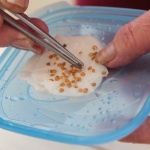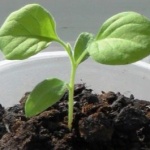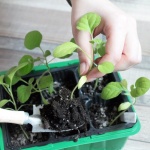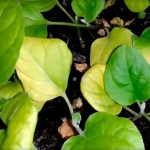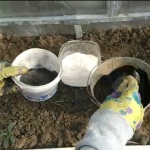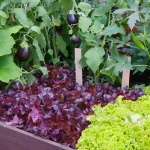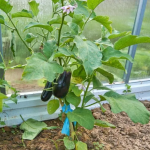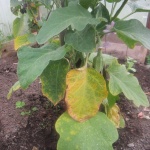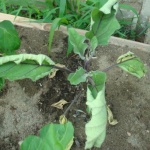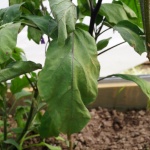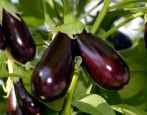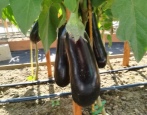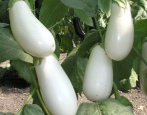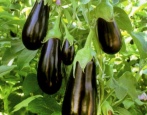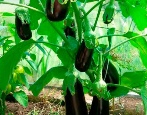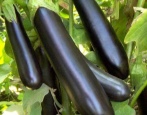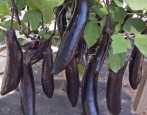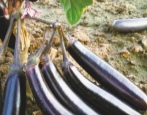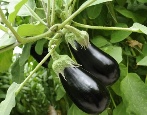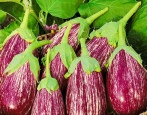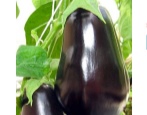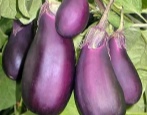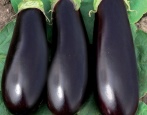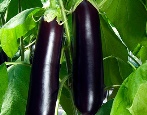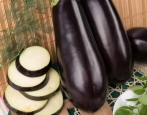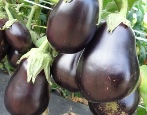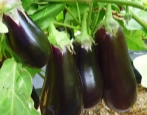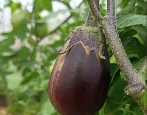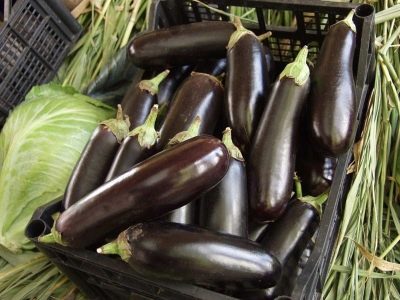
- Authors: France
- Name synonyms: Farama
- Year of approval: 2007
- Bush height, cm: 45-60
- Fruit shape: cylindrical
- Fruit weight, g: 155-203
- Yield: high yielding
- Fruit color: dark lilac
- Keeping quality: good
- Transportability: good
Horticultural shops offer a wide variety of eggplant varieties, with Farama especially notable. It is worth considering in more detail the peculiarities of the culture, as well as studying the scheme of its cultivation.
Description of the variety
Farama is a hybrid of several fruitful and healthy varieties. Belongs to the group of mid-season plants. Key benefits of culture include:
- high yield rate;
- safety of fruits;
- disease resistance.
Characteristics of the appearance of plants and fruits
Main characteristics:
- compact bushes, no more than 60 cm high;
- large leaf plates, mostly green or bluish-green;
- flowers are small, disappear rather quickly.
Farama is suitable for planting both in open ground and greenhouses.
The compact Farama bushes make it possible to plant even in confined conditions in small areas. At the same time, the variety forms rather large fruits.
Their characteristics:
- diameter - 5-6 cm;
- shape - cylindrical;
- length - up to 25 cm;
- weight - 155-203 g;
- the skin is glossy, thick, dark lilac.
The transportability of eggplants is high, which makes it possible to transport vegetables over long distances.
Purpose and taste
Tasters note the pleasant crunchy taste of this type of eggplant. The fruits are ideal both for fresh consumption as salads, and for pickling, canning and even freezing.
Ripening terms
The variety is mid-season, ripens 50-60 days after planting the seedlings.
Yield
On average, up to 298-340 centners of juicy eggplants can be harvested per hectare. The yield indicator depends on the temperature regime, the degree of watering and the availability of fertilizing.
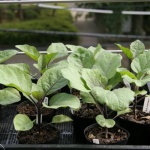
To get a tasty and bountiful eggplant crop, you must first grow strong and healthy seedlings. This culture is considered very capricious, therefore, you need to take care of seedlings when growing at home as correctly and carefully as possible.
Landing scheme
Gardeners recommend planting the crop so that there are no more than 3-4 bushes per square meter of the garden.
Growing and care
It is no secret that the stages of growing eggplant, regardless of the variety, are almost identical. The highlights are as follows.
- Preparation of planting material. The seeds are soaked in water to take whole and large samples that will not float to the surface. Also, eggplant seeds can be calcined at high temperatures for several minutes.
- Disembarkation. The seeds are pre-dried and then placed in prepared peat pots, deepening by less than 2 cm. If there are no peat pots, you can use another container, but you will have to look for the composition of fertile soil yourself.
- Transfer. It is started when the Farama bushes rise by at least 10-12 cm. It is carried out by hardening the variety for a week.
Before planting, you should prepare the site by adding fertilizer and loosening the soil. This will improve the survival rate of the variety, as well as prevent the development of various diseases and pests. When planting work is completed, it remains to take care of the care of the crop.
- It is not recommended to water the eggplant too often. It is necessary to monitor the need for water application according to the soil moisture level or climatic conditions.
- Loosening. A mandatory procedure to prevent the risk of plant disease. It is carried out mainly after each watering.
- Top dressing. On average, from 3 to 4 fertilizers are applied to the soil per season, using organic and complex compositions.
It is important to read the instructions before using fertilizers and determine the applicability of the product. Top dressing should be applied immediately under the root, otherwise there is a high probability of burning the leaves of the plant.
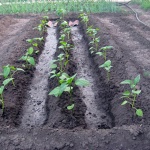
Planting eggplant is one of the most important stages in growing. When choosing a place for eggplants on your site, it is important to remember that this culture should be in warm soil, constantly illuminated by the sun. The plant is also very fond of spacious, open spaces, since its roots can grow over sufficient areas.
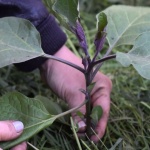
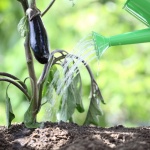
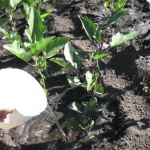
Soil requirements
Eggplant seeds are planted both directly in open ground and in pots. Regardless, care should be taken to choose the ideal place to grow your crop. Advice:
- preference should be given to sunny and windproof areas;
- groundwater must flow low, otherwise the probability of plant death is quite high;
- the soil must be fertile.
Before planting eggplants, it is recommended to thoroughly fertilize the bed with organic compounds, as well as to loosen the soil. Then the chances of getting a large harvest will increase markedly.
Disease and pest resistance
Faram's eggplant attracts the attention of gardeners with its strong immunity, it is considered one of the most resistant varieties to various diseases and pests. However, this does not mean that with improper care, the plant is not capable of getting sick.
Common diseases are fungi and rot, and among the pests, it is worth highlighting the spider mite or aphids. You can detect the presence of insects by light spots on the back of the leaf plates. Ignoring the problem will lead to the death of the plant.
Preventive treatments with special formulations will help to strengthen the immunity of eggplant. They need to be carried out with the use of drugs, it is recommended to carefully study the instructions before use.

Eggplant is one of the most demanding crops. For its successful cultivation, it is necessary to create optimal conditions, as well as to carry out prevention and fight against diseases and pests. Eggplant often infects both fungal and viral diseases. If treatment is not started on time, you can completely lose the crop.
